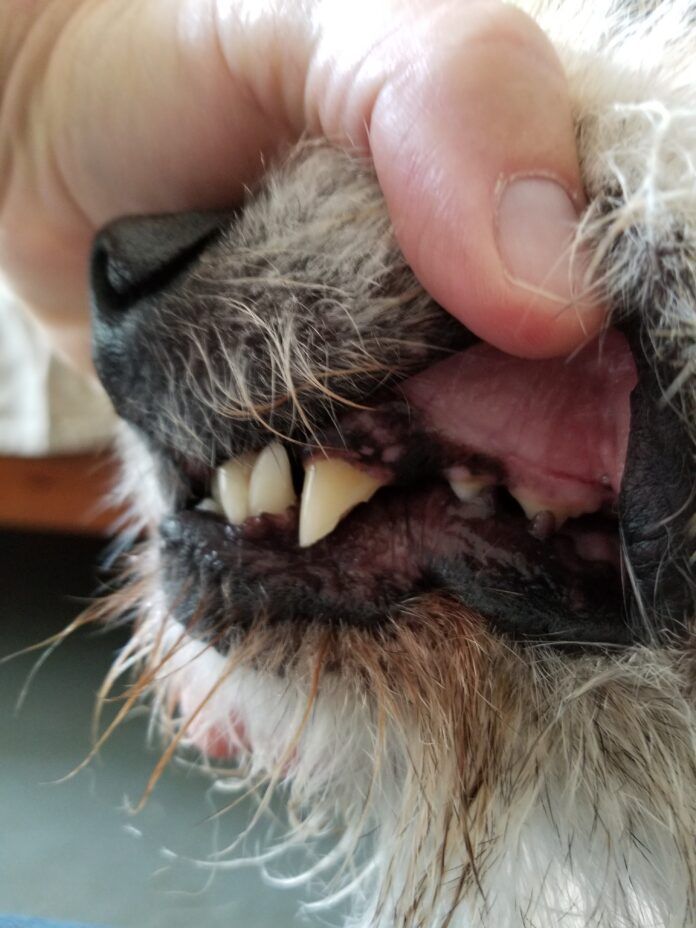
A chip or break that exposes a tooth’s pulp – the sensitive tissue that contains the tooth’s nerves and blood supply – will cause obvious discomfort. This calls for urgent care – not necessarily a trip to the after-hours emergency veterinary hospital, but not something that can be put off for weeks, either.
Your dog might exhibit one or more of the following signs of a broken tooth with exposed pulp:
- Reacting to hot or cold temperatures (including drinking cold water) with pain
- Avoiding chew toys
- Declining to eat treats like hard biscuits
- Refusing food altogether
- Chewing on only one side or more carefully than usual
- Drooling an abnormal amount for that dog
- Pawing at their mouth
- Shying away when the face is petted
These symptoms require a dental checkup, because left untreated, broken teeth with exposed pulp can become infected and lead to degeneration of the jawbone. A tooth with exposed nerves will usually be treated with extraction or a root canal. Vital pulp therapy may keep a recently fractured tooth alive if the patient is under 18 months of age.
Chipped teeth without symptoms
Not all chipped teeth crack or expose the pulp. Dogs might chip a tooth when catching a flying disc, running into something during high-speed play, or smacking into a dashboard when riding unsecured in a car that had to stop suddenly. Even if the chip is small, and your dog doesn’t display any signs of pain or discomfort, it’s a good idea to make a non-urgent appointment with your vet to take a look at the chip. The chip might need to be smoothed to keep from irritating your dog’s lips or tongue– and your vet stands the best chance at getting a good look to make sure the chip isn’t going to lead to a cracked tooth.





